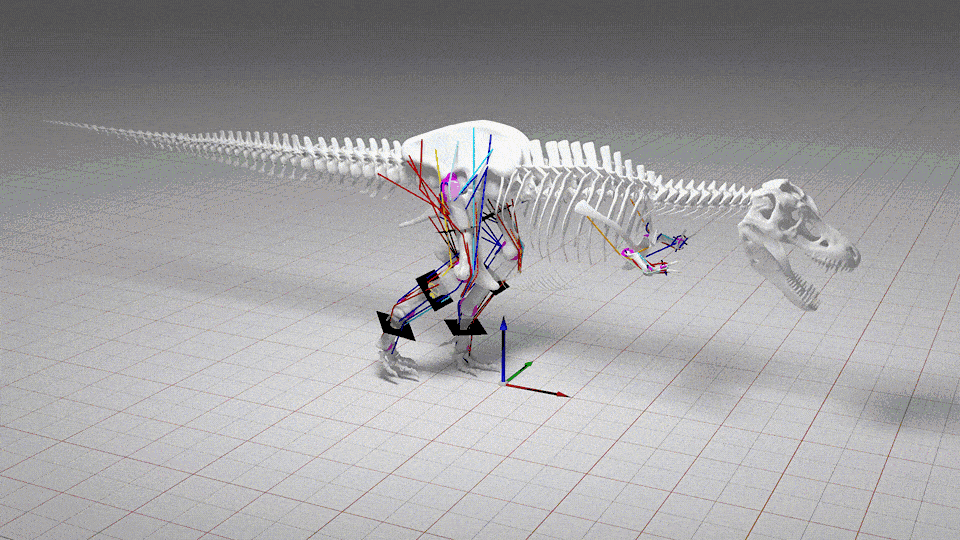When you buy through link on our site , we may gain an affiliate delegacy . Here ’s how it works .
Researchers in Australia have discovered fossil of two enormous predators that lived alongside one another , upend ideas about how the ancient ecosystem operated down under 120 million long time ago . This hoard of fossils included the older orotund megaraptor ever found .
Megaraptorids were a grouping of terrible predators in theCretaceousperiod ( 145 million to 66 million years ago ) . They lived in the ecosystems of Australia and South America , which werejoined togethervia Antarctica as part of a monolithic southern landmass called Gondwana .

The megaraptorid (right), carcharodontosaur (left) and unwillingne (bottom) depicted here shared an ancient ecosystem in what is now Australia.
Study lead - authorJake Kotevski , a paleontology doctoral nominee at the Museums Victoria Research Institute and Monash University in Australia , discover megaraptorids as a " hands first predator " with muscular forearms and long , curved claw for get target — they in effect bestow their fair game in for a " hug of decease , " he said in avideoreleased by Museums Victoria .
The fossils discovered by Kotevski and his fellow worker belonged to an unspecified 120 million - year - quondam megaraptorid that was 20 to 23 feet ( 6 to 7 measure ) long — making it one of the largest theropod dinosaur ( a bipedal radical of mostly meat - eat dinosaur ) ever get a line in Australia . It also predates megaraptorids in South America by around 30 million geezerhood .
In the new study , published Feb. 19 in theJournal of Vertebrate Paleontology , researchers also place fogey from another chemical group of large , predatory dinosaur called Carcharodontosauria , which are also find in South America but have never been key out in Australia before .

“Hug of death” megaraptorids were southern Australia’s apex predators during the Cretaceous period.
The carcharodontosaur fossils suggest that in Australia , these dinosaur grew up to 13 feet ( 4 m ) long , which is importantly shorter than their opposite number in South America , which grew up to 43 substructure ( 13 m ) .
In other words , the roles of the two predatory dinosaurs seem to have been reversed in Victoria , with megaraptorids move as the declamatory apex predator and carcharodontosaurs act as humble , secondary predators . Australia ’s unique Cretaceous ecosystem therefore had an " upside - down " moral force , accord to a statement secrete by Museums Victoria .
Related : What if a gargantuan asteroid had not wiped out the dinosaurs ?

“Hug of death” megaraptorids were southern Australia’s apex predators during the Cretaceous period.
The newly identified fogy were detect in what were the banks of a prominent river , like the innovative - sidereal day Ganges orAmazon , Kotevski told Live Science in an email . Southern Australia was close enough to the South Pole that it was within the Antarctic Circle during the Cretaceous , although the region wasmuch warm thenthan it is today .
The team identified the fossils , compile from the upper Strzelecki rock formation on the coastline of Victoria in southern Australia between 1988 and 2022 , with modern 3D imaging techniques , includingmicro - computed tomography . The proficiency involves taking X - rays of an target as it rotates 360 degrees so that it can be analyze in nifty detail .
The fossils revealed that gargantuan megaraptorids and carcharodontosaurs were living near the river , which Kotevski said was situated within a vast rift valley make as Australia draw in away from Tasmania and Antarctica .

— secret of 1st dinosaur lie in the Sahara and Amazon rainforest , study suggest
— Oldest - known dinosaur in North America is a ' crybaby - size ' raptor — and change what we know about how dinos conquered Earth
— Giant horned dinosaur ’s fossils were destroyed in WWII — but pic reveal it was an unknown coinage

" In the Antarctic R-2 , it has been proposed that Cretaceous [ Victoria ] experienced retentive full stop of dark / light that the poles experience today , " Kotevski said . " boneheaded forests lined this tight flowing river , where [ a ] ten thousand [ of ] small dinosaur thrived , seemingly dominated by our … apex predator megaraptorid . "
The discoveries total to evidence that dinosaurs were travel across Antarctica to move between South America and Australia during the middle of the Cretaceous , according to the sketch . However , Kotevski noted that investigator still have a lot more to learn about the Australian dinosaur ecosystem .
" More discovery , assemblage and enquiry is rudimentary to further unlocking these secrets and build a photograph of how these animals looked , differed , and behave within their environs , " Kotevski order .

You must confirm your public display name before commenting
Please logout and then login again , you will then be prompted to enter your video display name .














